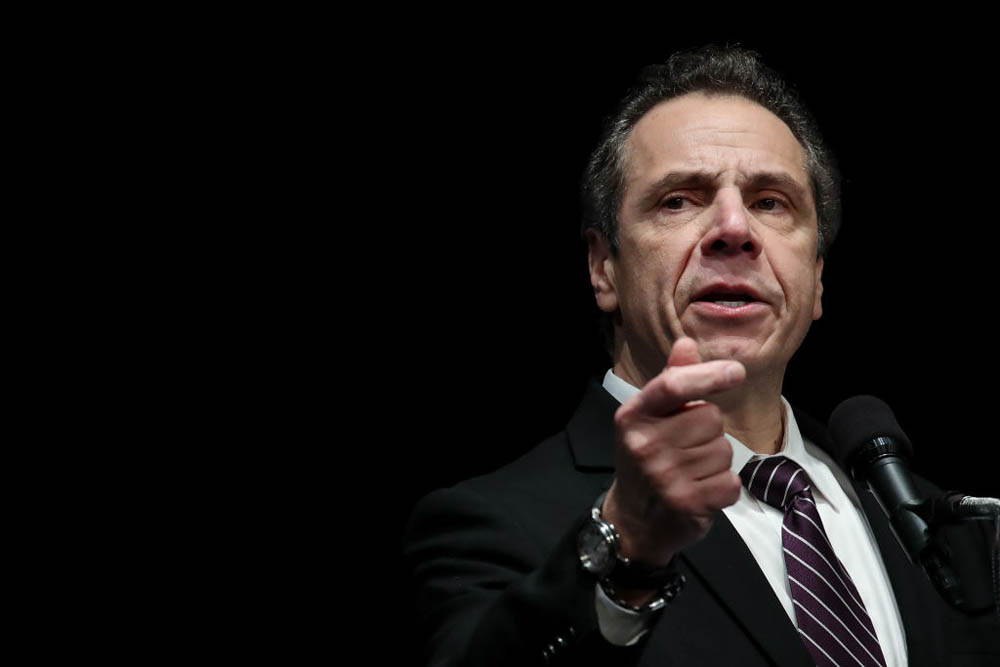In his proposed budget for the fiscal year that starts April 1, Gov. Cuomo has suggested taxing properties within “transportation improvement subdistricts” that the state-run Metropolitan Transportation Authority would create in New York City as a means of raising more money for transit projects. This approach, generally called “value capture,” can work well in certain circumstances. But this proposal seeks to seize power historically held by New York City: the power to tax local property and decide which public services, from firefighting to policing to education, to spend those tax dollars on.
The principle behind value capture is sound: Investments in mass transit can create value for property owners. The Bloomberg administration used city funds to pay for the MTA’s $2.4 billion No. 7 train extension to Hudson Yards, with the revenue generated from development there expected to pay back the debt.
The de Blasio administration has used another form of value capture with the MTA. It rezoned the Vanderbilt Corridor to allow property owners greater development rights in return for improvements to subways. One owner, SL Green, has invested $220 million in Grand Central station. And de Blasio’s recently enacted East Midtown rezoning will ultimately add about $500 million more in subway-station improvements throughout East Midtown.
These initiatives were done in close partnership between the city and the MTA. Value capture can’t be done on a mass scale or on a formulaic basis. Nor can it be unilaterally imposed.
Although the current proposal may be modified in budget negotiations, the notion of accomplishing value capture through rigid state-level legislation is — at its core — problematic.
This is especially so because the tools to implement value capture for transportation already exist. In fact, the city has committed $600 million in value-capture funds to the MTA’s current capital plan without the need for any state legislation.
Some examples in the budget message illustrate the problems:
- One proposal is to divert city property taxes to help pay for the troubled $10.2 billion East Side Access project to bring the Long Island Rail Road into Grand Central. Yes, Midtown buildings will benefit from this, but Long Island property owners and local governments will benefit more, as the eastern suburbs become a more attractive place to live and work. Yet the proposal wouldn’t authorize any taxes to be levied on Long Island property owners.
- Another proposal is to divert property taxes to help pay for the Second Avenue subway on the theory that it will increase property values for owners near the project. But it’s much easier to attribute increases in tax revenue in undeveloped areas like Hudson Yards.
Indeed, it’s virtually impossible to predict the subtle effects of any big transportation project on a complex, already developed, area. Some shop and restaurant owners around the Second Avenue Subway are seeing business decline, as pedestrians have formed new walking routes to get to the new train stations, and bypass their storefronts.
Consider also that one purpose of the Second Avenue line is to alleviate traffic on the Lexington Avenue line nearby. This expansion of capacity may well raise values for property owners from The Bronx to Brooklyn who may benefit from a less crowded Lexington line, as will Metro-North and, eventually, Long Islanders who pour into Grand Central. The same is true for any project to modernize signals: such investment eases bottlenecks throughout the MTA system, not just for property owners inside a certain corridor.
This proposal risks contradicting another goal: affordable housing. In many of its recent rezonings, including East Harlem, the city has supported increased market-rate housing to subsidize affordable housing in the neighborhood. Yet the MTA’s capturing of value specifically for transit would compete with the city’s capturing of the same value, in a different way, for cheaper housing.
Finally, property owners may take scant comfort in the fact that the proposal wouldn’t raise property taxes, only divert part of future increases in such revenue to the state. The city has always needed all of its property-tax revenue, and then some, to pay for public services. Eventually, this diversion would mean higher taxes overall.
We need better transit, and value capture may have a continued role in helping to finance it, along with ideas that do require state legislation, such as congestion pricing. But that requires the MTA to work in partnership with the city’s elected officials, who answer to city residents and who have thus always been responsible for the allocation of the city’s precious real-estate tax stream.
This piece originally appeared in the New York Post
______________________
Nicole Gelinas is a senior fellow at the Manhattan Institute and contributing editor at City Journal. Follow her on Twitter here.
Carl Weisbrod is a senior fellow at NYU’s Marron Institute of Urban Management, a member of the MTA Board and former chairman of the city Planning Commission.
This piece originally appeared in New York Post
